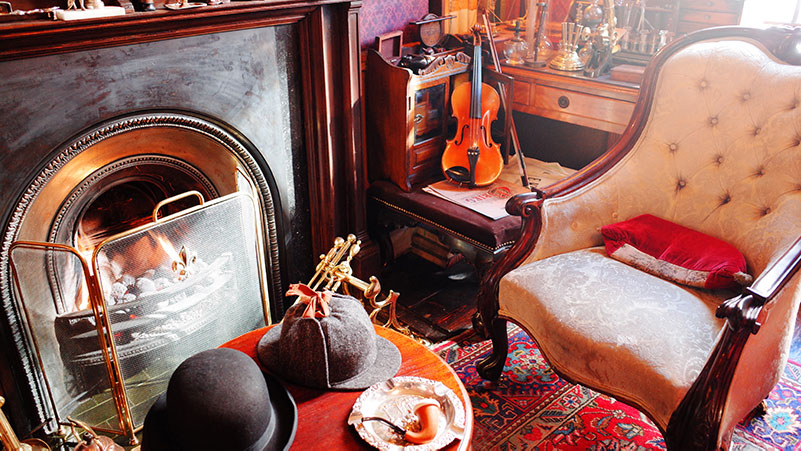Managing project budgets is one hell of a job. One must really be a visionary to calculate all the expenses – both time and financial ones. However, this is hardly the hardest part of collaboration: even despite the best preparation possible, most of the projects face some unpleasant circumstances that force them to go overboard and spend some extra. Especially if we talk about remote collaboration – finding good creative solutions is even harder in such circumstances.
As usual, I will say that design projects are also part of that game. And, as usual, I will also say that there are solutions that will help you avoid certain expenses by understanding what actually leads to them. But before we proceed with that part, I would like to explain how I got to the problem. I suggest we turn on our inner Sherlock Holmes stories mode for a bit and exploit his famous deductive method (many argue that it’s really the inductive one, but we’re not going to dispute that). We will visit the crime scene, see the general picture, and try to dissect it into smaller pieces to see what caused it. We will be tracing everything backward, from the situation where we have to spend more than planned to the very reason that made it happen. Mind you, I will assess almost every situation using the undying and objectively true formula “time = money” so that we have something to lean on in our detective story.
So, ready your magnifying glass and send a cab for Watson. The game, Mrs. Hudson, is on! And, for Sir Arthur’s sake, put on the damn hat.
Table of contents:
The Review In Bohemia

Crime scene: design projects, as you know it, usually have at least a couple of stakeholders whose task is to review the artwork and approve it before it is sent to production. If it is not approved, it must be redone, considering all the remarks of the reviewers. Still, the whole workflow design got burned together with the house the mockup was in, and I think I have a serious clue as to why. The problem is… *violin playing intensifies*… miscommunication.
So, in our story, the man in charge of design team project management – King of Bohemia – received a new version of the mockup from his designer and sent it to the stakeholders. It was Tuesday, and they replied several days later, on Thursday. The King used email for communication so that the communication channels didn’t mix.
So, here comes the reply. Stakeholder A (yes, it stands for Adler) is surprised that their previous remarks to version 2 were not used to fix the design, although the King does not remember them sending any. Stakeholder B wants “to change the color a bit” but doesn’t indicate which color and how and why. So, after a short talk with the designer (played by Watson), the King sent an email back asking for clarifications.
The response from both came on Friday afternoon. It was more or less clear and coherent now, the designer knew what to do, but since it was the end of the working week already, the new version came on Monday. Then, it took some time to be reviewed, and the King got the approval presumably a day later. Now, let’s do some maths: it took one whole week to apply the fixes suggested by two stakeholders, one of which claimed their suggestions were the same as the previous version. And these are only two reviewers, two email channels. What if there are more? How much time could the King theoretically lose before the fire started?
Solution: most of these things happen because the workflow is not optimized. The King didn’t know about Adler’s review suggestions, and it took Watson setting everything ablaze to find out. In fact, all of the workflow described above could be completed much faster if we avoided forwarding messages back and forth and eliminated asking for clarifications. How? Give the reviewers a possibility to show what they want to change direction on the mock-up using design review and approval software. Talk – and there would be no more scandals with smart women. This is the most solid one out of all project management tips.
The Speckled Deadline
Crime scene: prolonging deadlines when it appears there’s not enough time to finish the project is a rather common situation. Yet, despite the commonness, spending time more than planned always costs you. The PM Helen Stoner came to know it the hard way when she started hearing strange, scary noises when the project was ending. The reason? A venomous snake.

Solution: prolonging deadlines might not look as bad in the long run as I am picturing it now for you. If the project is small, the losses will be relatively small, too. Yet, should the project be bigger, it will instantly bite you as there will be many consequences, and financial ones are not even the worst of them. Dispose of the snake beforehand and plan everything in advance – with several spare days just in case, too.
The Design of the Baskervilles
Crime scene: the pitch was extremely detailed – Sir Charles Baskerville knew exactly what he wanted, how he wanted it, down to the tiniest details. The graphic design agency was very competent, so there shouldn’t really have been any problems. Except he was found murdered with a look of complete horror on his face.

Presenting various iterations to Charles, the designer John Barrymore emphasized changing some details to make the whole concept work together as one. Colors, shapes, layout – many things change a bit in the process compared to the pitch. Usually, it’s just fine, except Mr. Baskerville wanted the final mock-up to look exactly like he imagined – a tradition which was continued by young Sir Henry. Trying to explain to everyone why he was right, he finally got his own best graphic design ever and couldn’t be happier. Still, it proved to be absolutely ineffective within some months and didn’t sell well, which meant that money and time were wasted.
Solution: the realization of such an approach led to what caused the look of terror on Sir Charles’s face. The Design of The Baskervilles, they said – a plague, curse if you wish, but there is none, really. The reason for all the spooky stuff was a belief that commanding others without hearing them out works. Whenever someone has the idea they consider great, they cling to it as hard as they possibly can, and it requires a great deal of reasoning to make them let go. Usually, in the design industry, the agencies agree to follow what the client demands on condition they can release themselves from all the responsibility for the result. But if the project fails, the client never wants to blame themselves.
Remember that there’s always a reason for hiring a professional – if you could do something yourself, you wouldn’t need anybody else’s service. That is why the Baskervilles should have trusted their team members with their duties and listen to them. A good design is not just the one that is to your liking, it is the one that performs its function, and designers surely know better how to make it work. The dreadful hound is nothing more than stubbornness.
The Dancing Project Realities

Crime scene: it is a very common thing not to be able to keep track of everything that happens within the project and around it. Designer Hilton Cubitt knew it yet still tried to keep everything together somehow, despite the obvious problem. The problem is that the client and Mr. Hilton spoke different languages in terms of the timelines – the latest version, according to Hilton, was delivered on Monday, but the client says it took him all the week until Friday to get it. He says he wasn’t informed earlier. The PM, Elsie Patrick, understands them both but cannot translate anything – hence the project is buried.
Solution: to crack the dancing dates and timelines code, all the workflow should be kept in a single environment. If you are using some kind of a ‘code’, keep it as clear for the other side as possible. Provided you do the opposite; the whole workflow becomes very confusing and hard to track. Which means arguments and money losses, worsened relationships with a client, and lots of lost nerves. That is why I am happy to say I can offer you such an environment – a project collaboration tool.
The Five Budget Pips
Crime scene: we were at the very beginning of the project. The pitch was ready. All nuances were taken into account, and everybody knew what to do with their parts of the workflow. The project moved forward according to the schedule. Nothing seemed to jump out of hand, even though John Openshaw, the project manager, managed to hire people whose services cost much cheaper than expected. Everybody was waiting for the first mock-up, and here it came – together with five orange pips.

The mock-up seemed to follow the pitch here and there but was totally not something the company needed. That’s okay. The reviewers hoped to get their points to the designer, who should have fixed everything in future iterations. However, the hopes and reality were slightly different as the people John hired were not competent enough. Eventually, something reminding me of the expected result was delivered, with lots of problems along the way and far from perfect. I won’t dwell long on a detailed description of what happened, but to gain at least something, he had to go extra with all the edits and changes he needed to polish the work. The pips were the warning.
Solution: everyone’s willing to gain maximum results with minimum effort, and that is totally fine. That’s the whole point of the market, truly – to increase your profits and decrease expenses as much as possible. However, you have to consider some lines and limitations before starting the project and planning a budget. And the first and most important line here – to understand that the cheapest option is not always the best. It is always better to invest more in the beginning, to gain more in the end. All in all, you pay for the quality of service that would make your life easier, so make sure that your effort to save resources won’t give completely opposite results. Otherwise, you get back the seeds you’ve divided your budget into in the form of a complete disaster.
The Final Design Problem

Crime scene: probably the subtlest crime of them all that the genius of Professor Moriarty could only make up. It refers to particular works that are displayed for the public eye – logos and signboards, mostly. The restaurant had a strong brand identity design, everything was done on time, both the client and the agency were satisfied, but the project still met its ultimate demise – no one liked it. It didn’t help to achieve business goals. No customers. I have to say, Watson really hates this one.
Solution: sometimes, the surroundings play a much bigger role than you can imagine. The restaurant was made in a very old-fashioned style, with lots of antiques and pieces of art. But its ultimate fall (pun intended) happened because it didn’t fit everything else. No, the street was close to the center, and the restaurant was guaranteed to be seen by many people, but the next place to the left was a grocery store, and to the right – Baker’s Shop. People go there to buy stuff, and when they see a fancy restaurant in between – they wonder why and don’t go there.
Of course, the situation can turn out to be the opposite, and curiosity will take the upper hand, the word will spread, and so on. But when everything on the street looks fitting all together, and your place is the odd one out – it is always a gamble you might not be willing to take. Tread lightly, or you’ll find yourself falling to the depth of Reichenbach. Otherwise – count on your surrounding while developing the custom design to make it shine in front of them, not look weird and out of place.
Elementary, my dear Watson!
Yes, collaborative art projects are a complicated thing. All these workflows, team management, and planning are hard work. Alas, it makes it much more rewarding, don’t you think? It is such great fun when the project ends successfully, and everything works out thanks to our fascinating deduction. There are many design crimes. Avoiding them is hard, but that is why Sherlock and Watson came to our rescue today. Hope you find their investigative consultation helpful.
And now, it’s time for a cup of tea. Mrs. Hudson?

 TEAM SOLUTIONS
TEAM SOLUTIONS WORKFLOW SOLUTIONS
WORKFLOW SOLUTIONS



 REVIEW TOOL
REVIEW TOOL PROJECT MANAGEMENT
PROJECT MANAGEMENT TOOLS & INTEGRATIONS
TOOLS & INTEGRATIONS
 CLIENT INTERVIEWS
CLIENT INTERVIEWS









